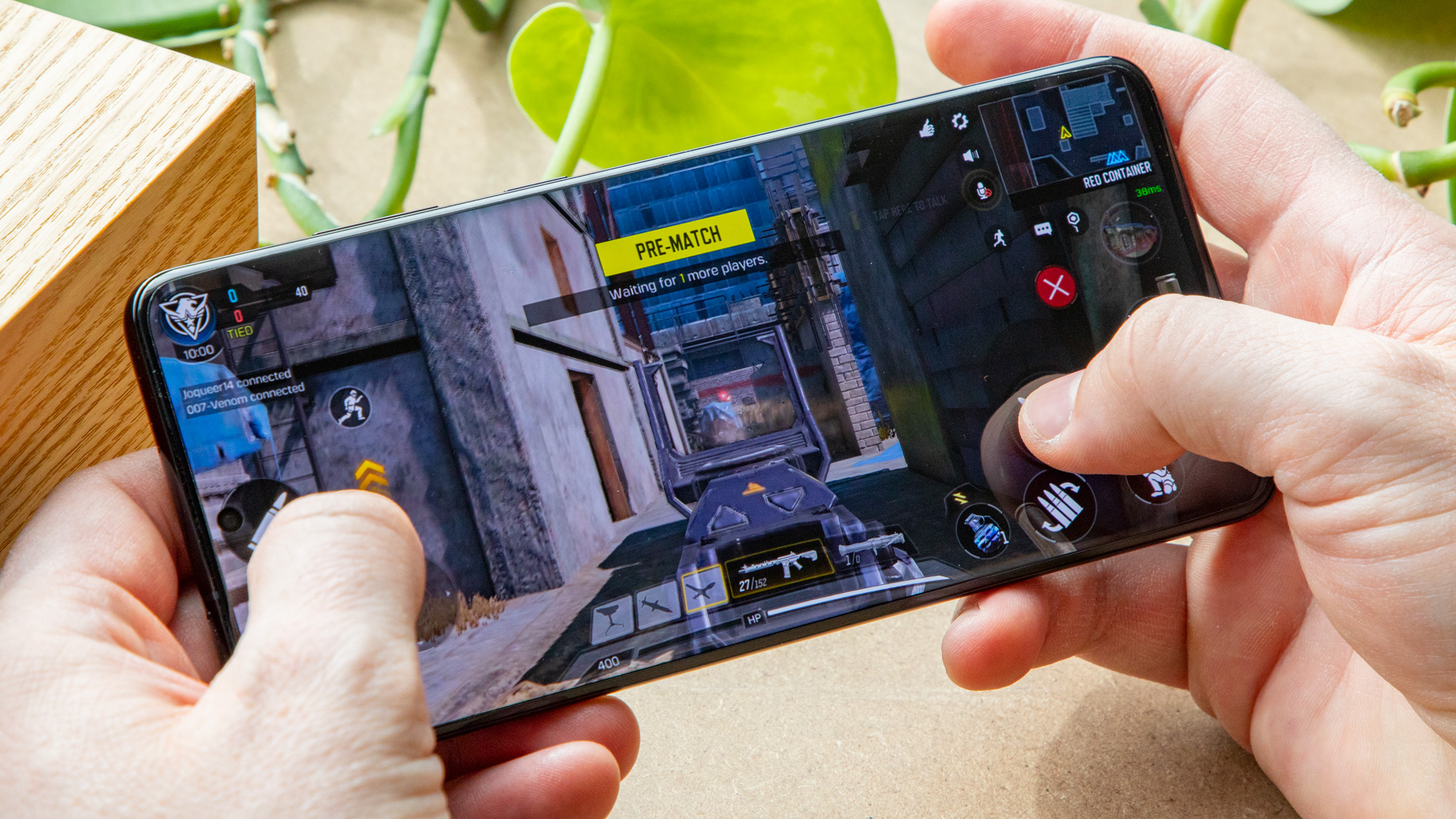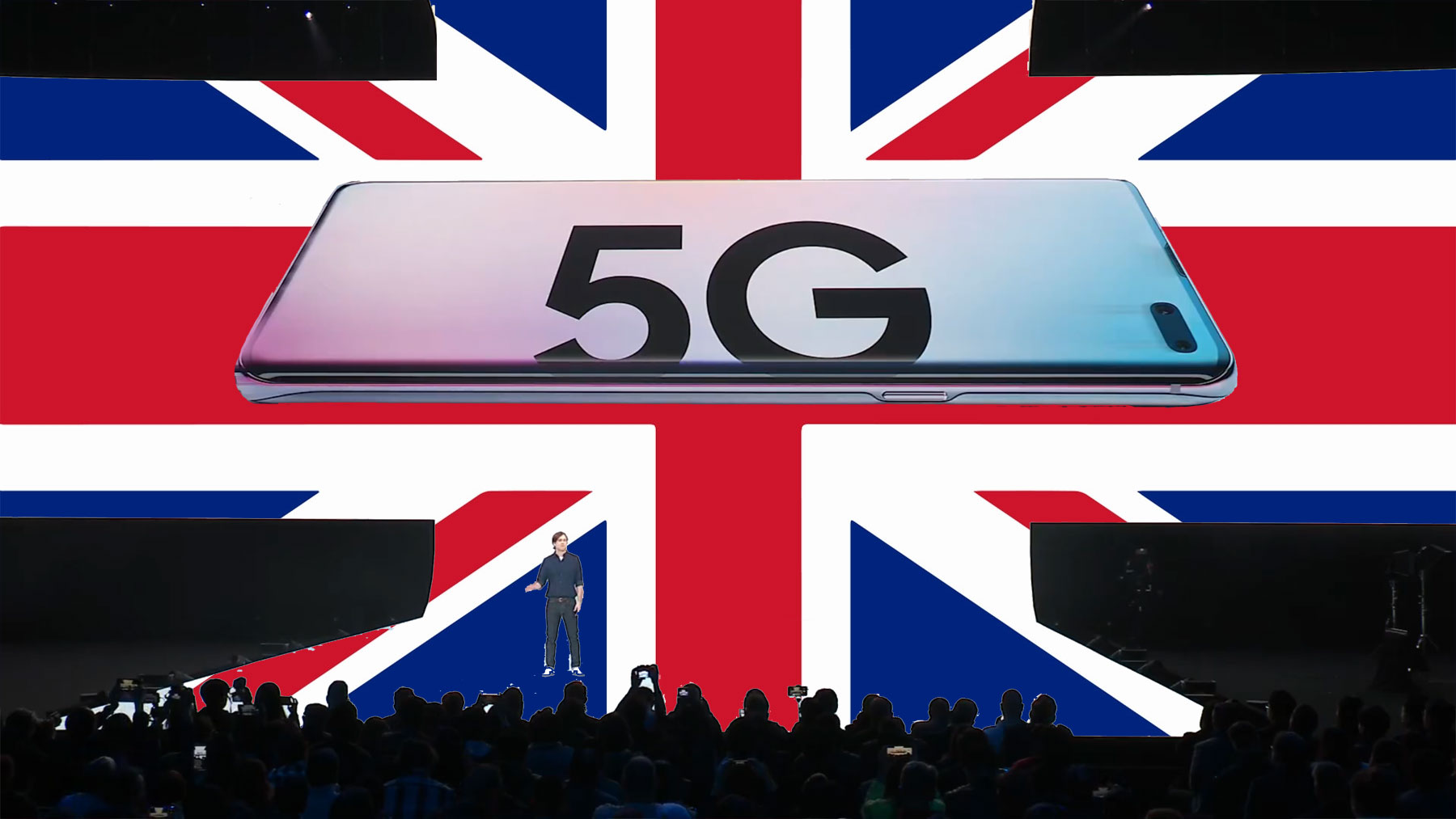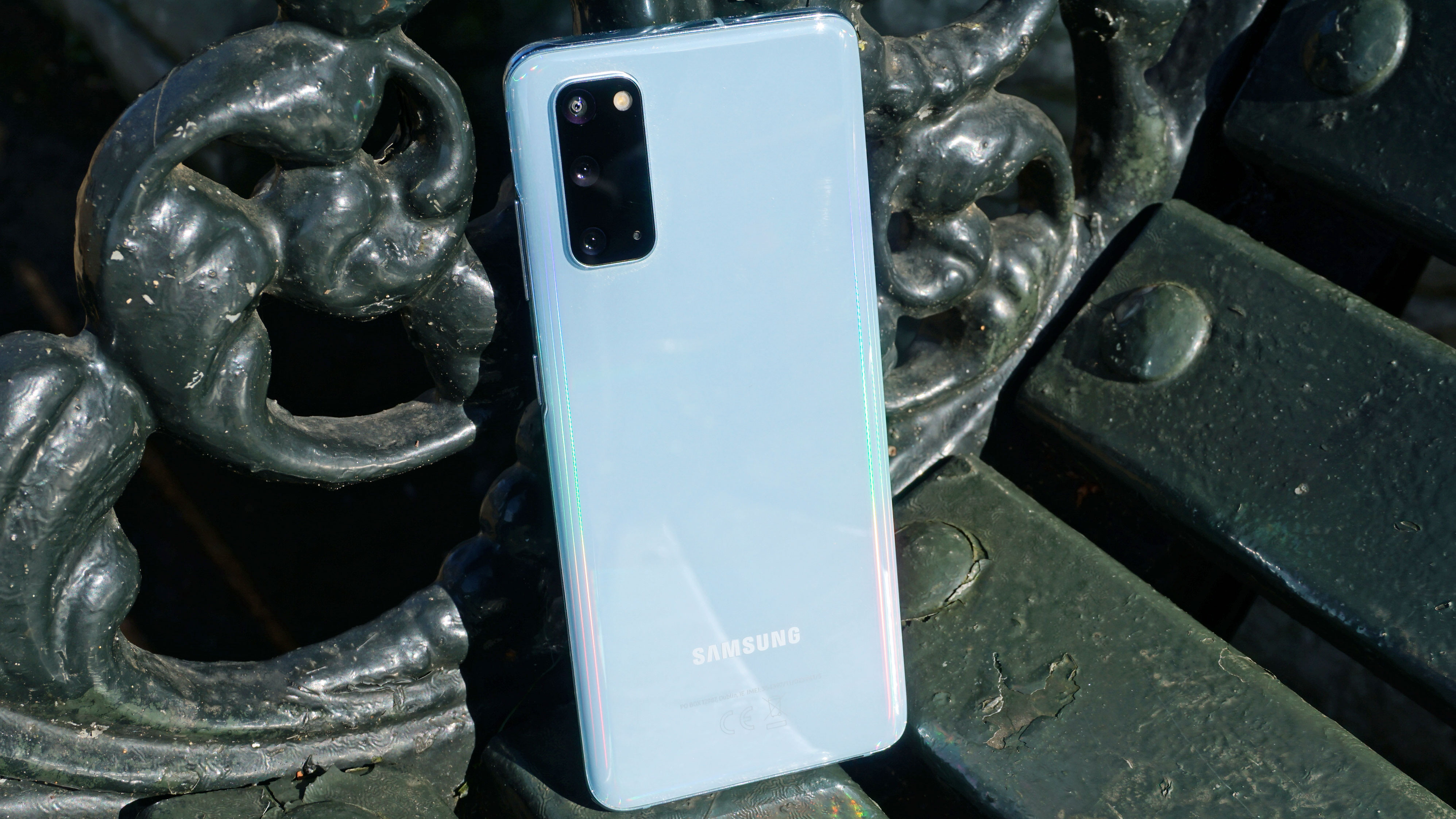5G: everything you need to know
5G is now in selected cities around the globe

5G networks are the next generation of mobile internet connectivity, offering faster speeds and more reliable connections on smartphones and other devices than ever before.
Combining cutting-edge network technology and the latest high-spec'd devices, 5G should offer connections that are multitudes faster than previous mobile technology, with average download speeds of around 1Gbps expected to be the norm across many (if not most) next-gen network.
The networks are expected to supercharge Internet of Things technology, providing the infrastructure needed to carry huge amounts of data that will enable a smarter and more connected world. Quite literally, info from tons of sensors could tell operators what's happening in your home, town, or even city in real-time.
5G networks have launched around the world with providers offering the connectivity tech across the US, UK and Australia, as well as a variety of other countries around the world. While rollout schedules have slowed due to the coronavirus outbreak, networks are still expanding, and carriers are continuing with their plans to expand current setups and launch nodes in new areas and cities.
Many of these networks are working alongside existing 3G and 4G technology to provide speedier connections that stay online no matter where you are. You may already be able to get 5G where you live, and below we're going to talk you through exactly what 5G is and more.
- We've tested and ranked a list of the very best 5G phones
Below you can see our quick video guide to 5G and what it will mean for you

Can you get 5G?
5G is available in many countries around the world, and below we'll run you through the exact situation for those in the US, UK and Australia.
Get daily insight, inspiration and deals in your inbox
Sign up for breaking news, reviews, opinion, top tech deals, and more.
Remember: just because you have a 5G phone and a 5G-ready plan doesn't mean you'll immediately get the next-gen connectivity tech. Coverage is still limited around the US, UK and Australia.
5G in the US
The main four carriers in the US now offer 5G connectivity, but where you can get a signal is still limited. That's increasing with each month though as each carrier expands its offering.
5G on Verizon
Verizon surprised most of the world by launching its 5G Home network in late 2018, followed by its 5G mobile network at the start of April 2019, making it the first globally to offer the next-generation network.
By the end of 2019, Verizon 5G had gone live in parts of 31 cities, starting with Chicago and reaching Los Angeles, New York City, Atlanta, Dallas, and filtering to smaller cities like Memphis, Columbus, and Grand Rapids.
At the time of writing (June 2020), it offers 5G in 35 locations, adding Little Rock, AR, Kansas City, MO and Cincinnati, OH in January, and then San Diego in May. It's planning even more throughout 2020, unsurprisingly, even in the face of the pandemic.
In Chicago, US we've managed to obtain speeds of up to 1.4Gbps, which is massively faster than 4G's theoretical top speed of 300Mbps (although average 4G speeds tend to be below 100Mbps).
However, Verizon's 5G coverage is patchy given its use of the ultra-high-speed but low-area mmWave tech – specifically in the 28Ghz and 39Ghz spectrums - so it's more accurate to say it's live in neighborhoods and areas within those cities – at least for now.
We experienced this patchiness firsthand and had to move around the city's various 5G masts to get this top speed, though we managed to get around 1Gbps quite consistently.
Those speeds are expected to increase, as are coverage areas: check Verizon's coverage maps to see which parts of your city should offer 5G connectivity.
5G on T-Mobile
T-Mobile went for a different strategy, especially since the company spent much of 2019 in eventually successful negotiations to merge with rival telecom Sprint. While T-Mobile also uses some 28Ghz mmWave frequencies, T-Mobile 5G's broader expansion also includes sub-600Mhz frequencies that reach much farther to provide for suburban and rural communities but deliver lower speeds.
So T-Mobile's mmWave coverage went live in New York City, Los Angeles, Dallas, and Las Vegas in June 2019 with plans to reach a total of 30 cities by year's end. The only phone that could harness 5G at the time was, unsurprisingly, the Samsung Galaxy S10 5G.
That was all in preparation for a sweeping nationwide 5G launch event at the lower 600Mhz frequencies in December 2019. This launch, the company claims, activated coverage across 1 million square miles of US area to reach 60% of Americans.
By June 2020, T-Mobile's 5G smartphone lineup included all three Samsung Galaxy S20 phones (including the S20 Plus and S20 Ultra), the LG V60 ThinQ, and the OnePlus 8 5G.
T-Mobile continued to expand throughout 2020, partnering with some regional carriers, like it did with GCI to piggyback off its network to give T-Mobile customers 5G access in Anchorage, Alaska, in June. After gaining access to Sprint 5G as the companies' merger gave both access to each other's networks, this final move brought T-Mobile 5G to all 50 states, though speeds and coverage area are still not universal.
5G on Sprint
Sprint opted for a middle-of-the-road frequency approach with the so-called 'mid-band' 2.5Ghz, which was likely picked to complement T-Mobile's high and low bands.
Sprint 5G went live in Chicago, Atlanta, Dallas-Fort Worth and Kansas City in May 2019, then New York City, Washington D.C., Phoenix, and Los Angeles in August 2019. It's now also live in Houston, with more cities to follow.
The carrier supports the Samsung Galaxy S20 5G, S20 Plus 5G, S20 Ultra 5G, Samsung Galaxy S10 5G, LG V50 ThinQ, and US-exclusive OnePlus 7T 5G, along with the HTC 5G Hub - a 5G hotspot, not a phone.
As the company's merger with T-Mobile was formally approved in February, Sprint customers began getting access to T-Mobile 5G beginning in April 2020. The plan is to fully combine both carrier networks and branding under a New T-Mobile banner, but it's unclear when that will be formalized; for now, Sprint customers will continue under their carrier, but will piggyback off T-Mobile's network in the meantime.
5G on AT&T
AT&T had the most limited investment in 5G. After a late 2018 launch, the carrier went so far as to expand to seven more cities including Austin, Los Angeles, San Francisco and Orlando in April 2019 but still didn't have a phone, relying on the 5G Netgear Nighthawk mobile hotspot for service.
Instead, the carrier burned consumer confidence by hyping '5Ge' or 5G Evolution, a souped-up 4G service AT&T claimed included 5G tech - claims that were criticized across the tech and telecom sphere.
Its 5G coverage has since improved though and the network does now offer 5G handsets, such as the Samsung Galaxy S20 range and the LG V60 ThinQ.
Currently, AT&T offers true 5G in 190 'markets' (aka areas in certain counties, cities, and towns) across the US – check AT&T's latest list to see if it's available in your area.
5G in the UK

UK carriers had a similarly expansive 2019, likewise reaching cities and towns but not blanketing the majority of the country. See our 5G in the UK page for specifics on each carrier.
5G on EE
EE was the first UK carrier to launch its 5G network, switching it on in six cities on May 30 2019. By the end of 2019, it had expanded to 50 towns and cities from London to Edinburgh, including Birmingham, Belfast, Manchester, Liverpool, Leeds, Glasgow, and Wolverhampton. By October 2020, coverage was available in 112 towns and cities.
Like the US networks, though, 5G covers some but not all areas in each city. While the promised 1Gbps speeds were possible, we saw them more around the 200-400Mbps range.
EE has 12 5G devices at the time of writing, from cheaper options like the Oppo Reno 5G and Samsung Galaxy A90 5G to expensive options like the Samsung Galaxy S20 Ultra 5G and the Samsung Galaxy Fold 5G.
5G on Vodafone
Vodafone launched its 5G service on July 3, 2019 in seven cities, rolling out to a further eight towns and cities on July 17. By year's end, that had expanded to 31 cities and towns, including London, Glasgow, Birmingham, Cardiff. As of October 2020, Vodafone offers 5G in 54 places.
It also offers 5G roaming in select locations, which the other major UK networks don't at the time of writing.
The carrier offers seven 5G smartphones: the Samsung Galaxy S20 5G, S20 Plus 5G, Xiaomi Mi Mix 3 5G, Samsung Galaxy A90 5G, Samsung Galaxy S10 5G, Samsung Galaxy Note 10 Plus 5G, and the Huawei Mate 20 X 5G.
5G on Three
Next up was Three, which launched a 5G service in London on August 19, though initially only for home broadband. The carrier's planned late 2019 mobile 5G rollout was pushed back to early 2020 to ensure all elements of the network were built out.
It has now launched though, with 5G offered in parts of 68 locations as of October 2020 - so it made up for lost time. It also offers 5G as standard on all its plans, which not all networks do, and it sells a similar selection of 5G handsets.
5G on O2
O2 finally rolled out its 5G service in October 2019 in London, Cardiff, Edinburgh, Belfast, Leeds, and Slough. The carrier planned to expand 5G to 14 additional cities by year's end, including Bristol, Eton, Leicester, Nottingham, and Windsor. As of October 2020, it now offers 5G in 75 locations around the country.
O2 offers twelve 5G devices including the Samsung Galaxy S10 5G, Galaxy Note 10 Plus 5G, Galaxy A90 5G, Galaxy S20 5G, S20 Plus 5G, S20 Ultra 5G, Xiaomi Mi Mix 3 5G, Huawei Mate 20 X 5G, and the Oppo Reno 5G.
5G on other UK networks
Sky Mobile has now launched at the start of 2020 (after a couple of months of delay past the original November 2019 launch date) offering service in a variety of cities. It uses O2's infrastructure, so should match that network's coverage.
Tesco Mobile switched 5G on in March 2020, offering coverage in the same places as O2, while VOXI launched in October 2019, with coverage in the same places as Vodafone.
The MVNO BT launched its own 5G in October 2019, and since it uses EE's 5G network, the former's coverage extends wherever the latter's goes. BT's 5G phone lineup includes the likes of the Samsung Galaxy S20 range, Samsung Galaxy S10 5G, Samsung Galaxy Note 10 5G, OnePlus 7 Pro 5G, Huawei Mate 20 X 5G and Oppo Reno 5G.
5G in Australia
The three major telcos have all got well-established 5G networks in Australia at this stage, with Telstra and Optus leading the charge and Vodafone catching up after launching a little late.
In fact, Australia has some of the fastest 5G speeds in the world as of mid-2021, well ahead of both the US and UK, with a median download speed nearing 300Mbps, about double the global average.
Telstra and Optus are locked in a fierce battle, with both variably claiming to have the fastest 5G speeds in the country. While the two are certainly comparable for download and upload rates, Telstra has an edge on national coverage at this stage, and as a result, the amount of its customers that actually use the new technology is more than double that of Optus'.
The roll out continues, however, and coverage is steadily increasing for both major telcos. For a detailed and up-to-date map on coverage across Australia, check out Telstra's dedicated 5G page as well as the Optus 5G page.

Which 5G phones are available?

A number of 5G phone announcements were made in 2019 and early 2020 and we expect more to come throughout the year and beyond, however not all handsets are available on all carriers.
In the US, most carriers support the Samsung Galaxy S20 range, Samsung Galaxy S10 5G, Samsung Note 10 Plus 5G, and LG V50 ThinQ 5G. Sprint exclusively offers the OnePlus 7 Pro 5G, while T-Mobile has the OnePlus 7T Pro 5G McLaren Edition. The lone 'affordable' 5G option remains on Verizon as the phones compatible with Motorola's 5G Moto Mod, which include the mid-range Moto Z4, Moto Z3, and Moto Z2 Force.
Verizon and AT&T are also supporting 5G mobile hotspots, which provide faster but not top speeds to existing 4G LTE phones.
For those in the UK, you can currently get hold of twelve 5G phones; the Samsung Galaxy S20 5G, Galaxy S20 Plus 5G, Galaxy S20 Ultra 5G, Galaxy S10 5G, Oppo Reno 5G, OnePlus 7 Pro 5G, Xiaomi Mi Mix 3 5G, Huawei Mate 20 X 5G, the LG V50 ThinQ 5G, the Samsung Galaxy Note 10 Plus 5G, the OnePlus 7 Pro 5G, and the massive Samsung Galaxy Fold 5G.
In Australia, eight 5G smartphones are currently available. There's the Samsung Galaxy S20 5G / S20 Plus 5G / S20 Ultra 5G, then there's also the Oppo Reno 5G, the Xiaomi Mi Mix 3 5G, the Samsung Galaxy Note 10 Plus 5G, the Samsung Galaxy S10 5G, and the LG V50 ThinQ 5G.
Beyond the currently available 5G phones, other 5G handsets have also been announced, such as the Huawei P40, Huawei P40 Pro, Sony Xperia 1 II, Nokia 8.3 5G, and Xiaomi Mi 10 range.
- 5G iPhone: when will we see Apple make one?

5G speed
How fast is 5G?
5G speeds will vary between locations, countries, carriers and devices, but on the whole the average internet speed you can expect should be much greater than what's currently offered on 4G.
We've been testing the first 5G networks in the US, UK, and Australia, and have found speeds to be a little bit of a mixed bag.
While some of the mmWave networks - most reliably, Verizon in the US - regularly provide over 1Gbps as promised, their coverage is spotty and minimal. Sprint's mid-band 2.5Ghz 5G service covers more area and reliably offers speeds in the 200Mbps region, which is less impressive but still far superior to typical 4G LTE speeds.
In the UK, EE's network maxed out at 550Mbps in our tests, but spotty coverage resulted in speeds averaging 200Mbps-400Mbps. You can expect a similar mix on the UK's other 5G networks, as well as on Australia's.
- Our first 5G speed test: 1.4Gbps in Chicago
- 24 hours with the OnePlus 7 Pro 5G: the UK's first 5G phone
What do 5G networks mean for me?
- Faster download and upload speeds
- Smoother streaming of online content
- Higher-quality voice and video calls
- More reliable mobile connections
- Greater number of connected IoT devices
- Expansion of advanced technologies - such as self-driving cars & smart cities
5G safety
Is 5G safe?
Yes. Although some concerns have been voiced about the tech by anti-5G campaigners, particularly with regards to radiation, research shows there’s no scientific evidence of any risks.
In fact, the International Commission on Non‐Ionizing Radiation Protection (ICNIRP) - a body that assesses the health risks of radio broadcasts - has declared 5G completely safe as long as its new guidelines are followed (which they will be).
It spent seven years coming up with the new guidelines, which have been developed after a thorough review of all relevant scientific literature, scientific workshops, and an extensive public consultation process.
The ICNIRP stated that even its previous guidelines, dating back to 1998, would have been adequate for 5G, but additional protections have been put in place. These new guidelines address all forms of 5G, including the very highest frequency spectrum.
This follows tests from Ofcom (the UKs communications regulator), which found that electromagnetic field (EMF) emissions from 5G are a fraction of the highest safe level. The maximum measured at any site was approximately 1.5% of those levels.
There have also been growing (and baseless) concerns that 5G is in some way related to Covid-19, even leading masts to be subject to arson attacks in the UK. But this is nothing more than a conspiracy theory.
In a statement, Mobile UK (a trade association representing the UK’s main mobile networks), said: “There is no scientific evidence of any link between 5G and coronavirus. Fact. Not only are these claims baseless, they are harmful for the people and businesses that rely on the continuity of our services.”

Mike Moore is Deputy Editor at TechRadar Pro. He has worked as a B2B and B2C tech journalist for nearly a decade, including at one of the UK's leading national newspapers and fellow Future title ITProPortal, and when he's not keeping track of all the latest enterprise and workplace trends, can most likely be found watching, following or taking part in some kind of sport.